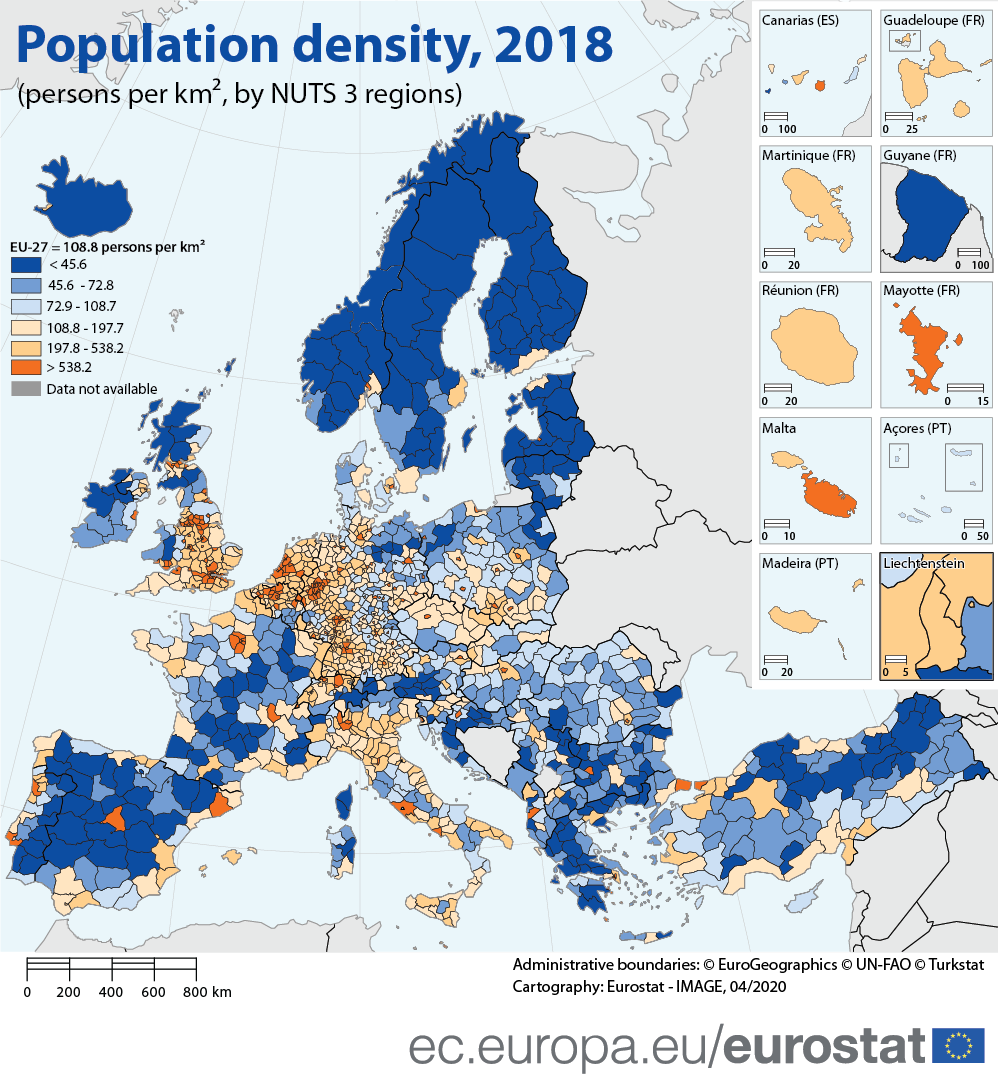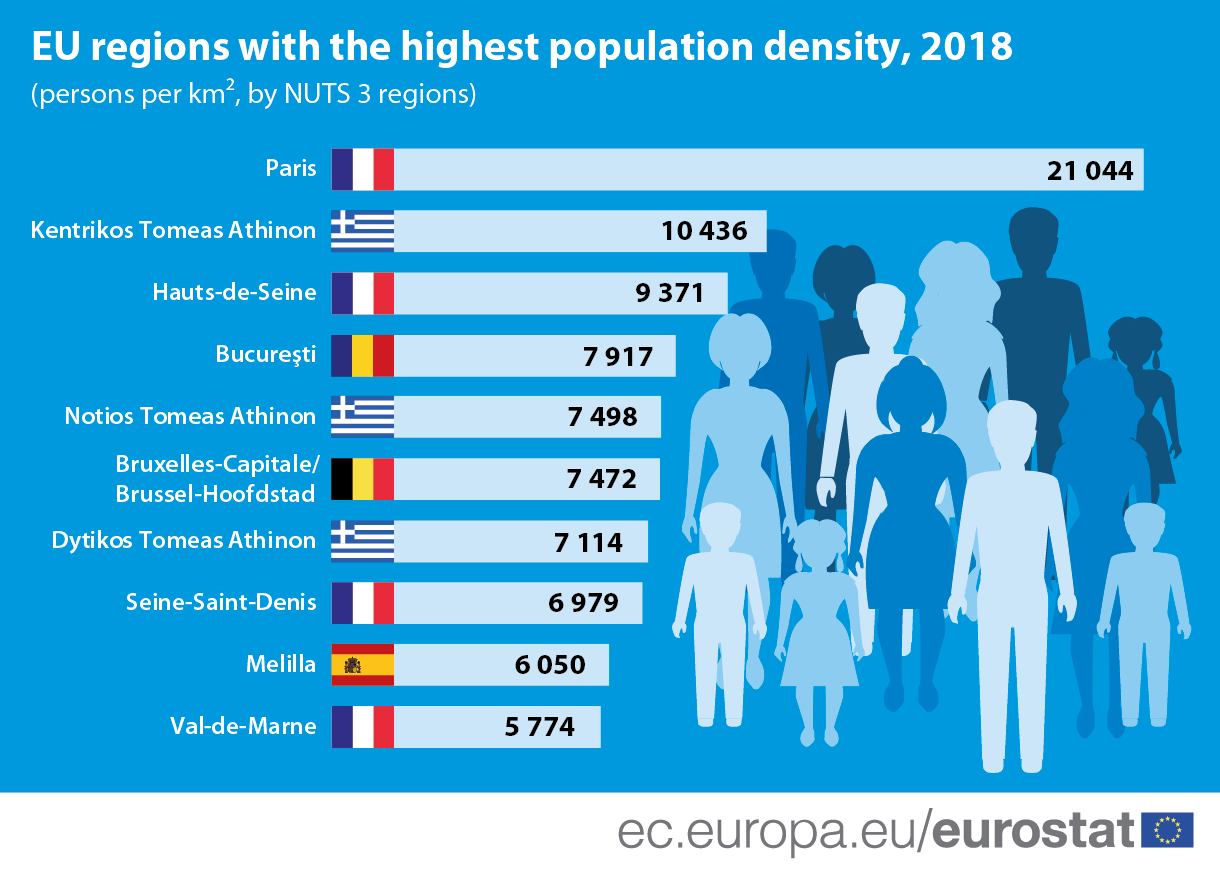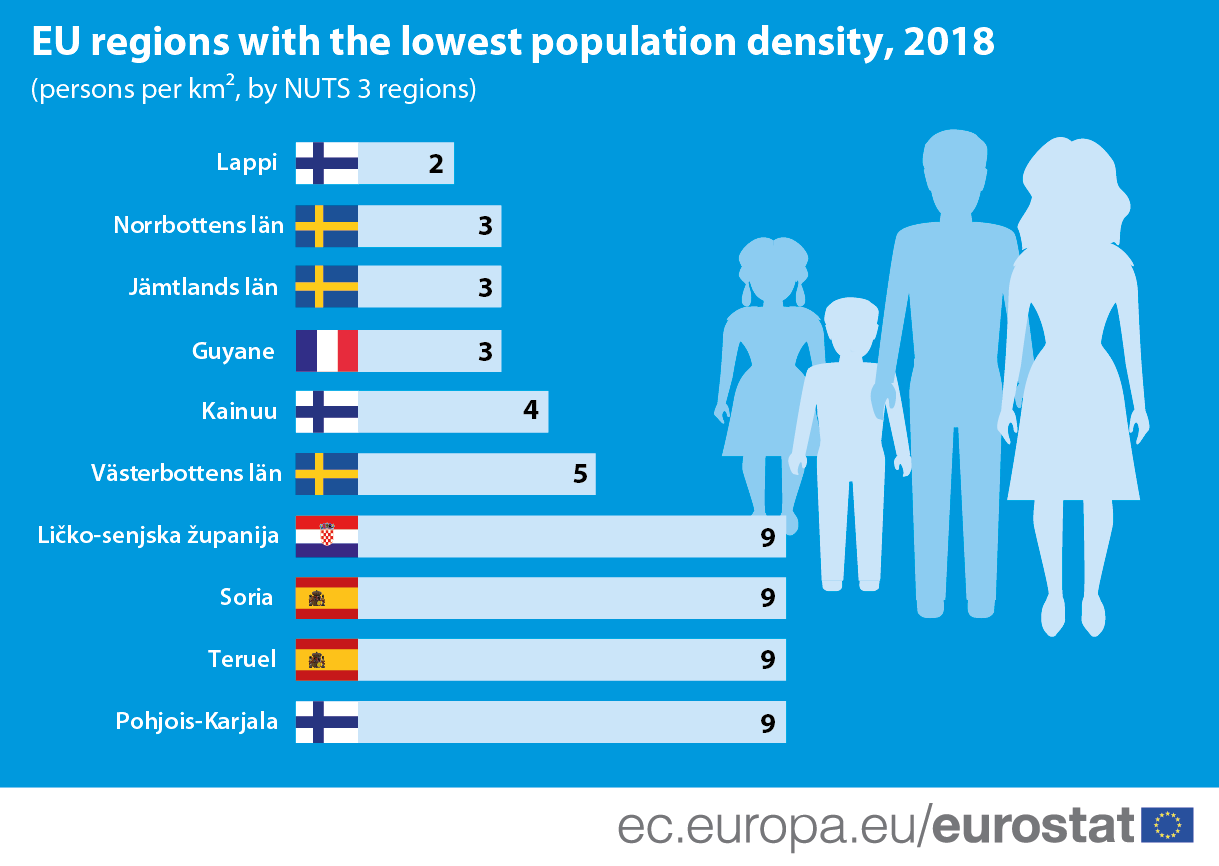From the large forest and mountain regions in the Nordic countries to the sprawling life in the inner cities, there are large differences in how close together people live across the regions in the European Union (EU). The social distancing measures imposed across Europe to limit the spread of the coronavirus are particularly critical in regions with high population density, where it is difficult to go outside, go shopping or use public transport without getting close to your fellow citizens.
Eurostat has taken a closer look at the population density across the NUTS 3 regions of the EU. In large parts of the Nordic countries, in the Baltic countries and across large swathes of the Iberian Peninsula and central France, there are few inhabitants per square kilometre.
In contrast, in and around most capitals and other large economic centres, there tends to be a high number of people living within the limited geographical area of the region.
Data source: demo_r_d3dens
In 2018, the ten NUTS 3 regions with the highest population density were dominated by large capitals and their surrounding areas. In Paris, there were on average 21 044 people living per square kilometre (km2) of the city, by far the highest in the EU. Several of the regions surrounding Paris also made this Top 10 list, including Hauts-de-Seine (9 371 persons per km2), Seine-Saint-Denis (6 979 persons per km2) and Val-de-Marne (5 774 persons per km2).
The second highest density in the EU was registered in Central Athens (Kentrikos Tomeas Athinon), with 10 436 persons per km2, with South Athens (Notios Tomeas Athinon; 7 498 persons per km2) and Western Athens (Dytikos Tomeas Athinon; 7 114 persons per km2) also making the Top 10.
The rest of the Top 10 list was made up by the Romanian capital city (Bucureşti; 7 917 persons per km2) in fourth place, the Belgian capital city of Brussels (7 472 persons per km2) in sixth place and the Spanish autonomous city Melilla on the North African coast (6 050 persons per km2) in ninth place.
Data source: demo_r_d3dens
It should be noted that population density is also dependent on the size of the spatial unit studied. For example, at a very detailed level, the most densely populated square kilometre in the EU lies in the south-western suburbs of Barcelona, within L’Hospitalet de Llobregat (53 119 inhabitants/km² in 2011). It is followed by the 18th arrondissement in Paris, not far from the Basilica of Sacré Cœur (52 218 inhabitants/km²) and Badalona in the north-east suburbs of Barcelona (50 287 inhabitants/km²).
Lapland in Finland, the region with the fewest inhabitants per km2
The large forest regions and barren subarctic regions in Finland and Sweden feature heavily in the list of the ten regions in the EU with the fewest inhabitants per km2 in 2018.
Lapland (Lappi), the northernmost region of Finland, only counted 2 inhabitants per km2. Its neighbouring region across the border in Sweden, Norrbottens län, counted 3 inhabitants per km2, just as another Swedish region, Jämtlands län, and the French overseas region Guyane.
Data source: demo_r_d3dens
Further Swedish and Finnish regions followed: Kainuu (4 inhabitants per km2), Västerbottens län (5) and Phjois-Karjala (9). There were only 9 inhabitants per km2 in the Croatian Lika-Senj County (Ličko-senjska županija) as well as in the Spanish regions Soria and Teruel.
For more information, take a look at the overview of statistics on regions and cities.
Notes:
- This comparison analyses regions at NUTS 3 level, which defines small regions for specific diagnoses. More information on the NUTS classification of European regions can be found here.
- The European Union (EU) includes 27 EU Member States. The United Kingdom left the European Union on 31 January 2020. Further information is published here.
To contact us, please visit our User Support page.
For press queries, please contact our Media Support.




